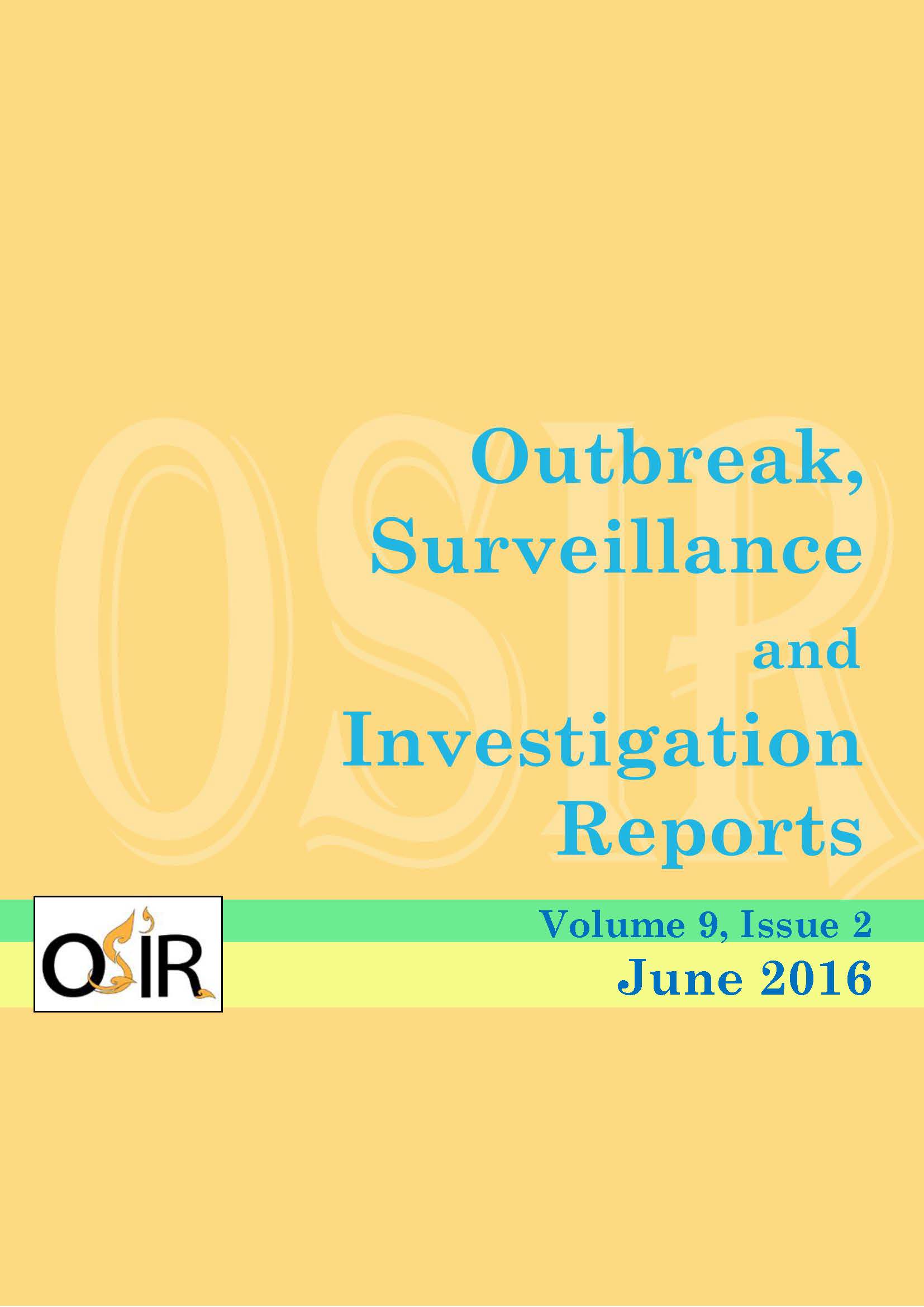A Large Outbreak of Japanese Encephalitis in Rakhine State, Myanmar: Implication for Vaccine Policy
DOI:
https://doi.org/10.59096/osir.v9i2.263215Keywords:
Japanese encephalitis, outbreak investigation, Rakhine State, MyanmarAbstract
Japanese Encephalitis is endemic in Rakhine State, western Myanmar. In July 2014, 27 patients were admitted to Sittwe General Hospital, Rakhine State. Few patients died and some patients were confirmed as having Japanese Encephalitis (JE) infection. An outbreak investigation was conducted in forty six villages of nine JE affected townships in Rakhine state. The objectives were to describe the outbreak and to identify potential risk factors, reservoir and vector of JE virus in Rakhine State. Active case findings, environmental and entomological study were performed. We found 49 JE suspected cases with 10 deaths. Among them, 21 cases were confirmed as Japanese encephalitis infection by positive immunoglobulin M (IgM) ELISA. Culex tritaeniorhynchus was found in most JE affected townships. Almost all villagers had no awareness about JE transmission and prevention. Our investigation underscored the importance of collaboration between human and animal doctors, the raising of knowledge and awareness about JE transmission and prevention before the rainy season in Rakhine State, and the need for more studies on usefulness of JE vaccination among high risk population.
References
Myanmar. Ministry of Health. Annual Report of Vector Borne Diseases Control Program, Rakhine State. Nay Pyi Taw: Ministry of Health, Myanmar; 2013.
Myanmar. Ministry of Health. Annual Report of Vector Borne Diseases Control Program. Nay Pyi Taw: Ministry of Health, Myanmar; 2013.
Mori MC, Siegel R. Live attenuated Japanese encephalitis (SA14-14-2) vaccine: The best alternative? The Vaccine Revolution. 2000 June 3 [cited 2014 Nov 10]. <https://web.stanford.edu/~siegelr/mori.html>
Hills SL, Weber IB, Fischer M. Japanese encephalitis. In: Centers for Disease Control and Prevention. CDC Health Information for International Travel 2014. New York: Oxford University Press; 2014 [cited 2014 Nov 10]. <http://wwwnc.cdc.gov/travel/yellowbook/2016/infectious-diseases-related-to-travel/japanese-encephalitis>
The Center for Food Security and Public Health. Japanese encephalitis. 2016 Jan [cited 2014 Nov 10]. <http://www.cfsph.iastate.edu/Factsheets/pdfs/japanese_encephalitis.pdf>
Myanmar. Ministry of Health. Training modules on training course in entomology and vector control in Myanmar. Nay Pyi Taw: Ministry of Health, Myanmar; 2012.
Gordis L. Epidemiology. 5th ed. Philadelphia: Elsevier/Saunders; 2013.
Centers for Disease Control and Prevention. Epi Info [cited 2014 Nov 10]. <http://wwwn.cdc.gov/epiinfo/html/prevVersion.htm>
InBios International, Inc. JE DetectTM IgM Antibody Capture ELISA (MAC-ELISA). 2011 Oct 28 [cited 2014 Nov 10]. <http://www.filgen.jp/Product/Bioscience4/InBios/JEMS-1%20JE%20Detect%20IgM%20Antibody%20Capture%20ELISA%20Insert.pdf>
Daniel WW. Biostatistics: a foundation for analysis in the health sciences. 8th ed. Georgia: John Wiley & Sons, Inc.; 2005.
Downloads
Published
How to Cite
Issue
Section
License
Copyright (c) 2023 Outbreak, Surveillance, Investigation & Response (OSIR) Journal

This work is licensed under a Creative Commons Attribution-NonCommercial-NoDerivatives 4.0 International License.









